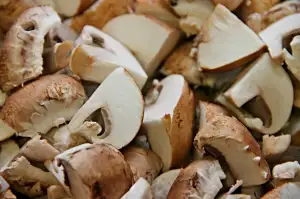Unlock the Magic of White Wine for Cooking: A Guide to Elevating Your Culinary Creations

- Types of White Wine Suitable for Cooking
- Benefits of Using White Wine in Cooking
- Tips for Choosing the Right White Wine for Cooking
- How to Use White Wine in Various Recipes
- Common Mistakes to Avoid When Cooking with White Wine
- Pairing White Wine with Different Types of Dishes
- Frequently Asked Questions about Cooking with White Wine
White wine is not just a delightful beverage to sip on; it also adds a touch of elegance and complexity to your culinary creations. Whether you're a seasoned chef or an amateur cook, incorporating white wine into your dishes can take them to new heights. From enhancing flavors to tenderizing meats, white wine has the power to unlock the magic in your recipes. In this guide, we will explore the different types of white wine suitable for cooking, the benefits of using white wine in your dishes, and provide tips on how to choose the right white wine for various recipes. So let's embark on this flavorful journey and discover how white wine can elevate your culinary skills!
Types of White Wine Suitable for Cooking
When it comes to cooking with white wine, not all varieties are created equal. Certain types of white wine lend themselves better to specific dishes and flavors. Here are a few types of white wine that are commonly used in cooking:
1. Chardonnay: Known for its buttery and oaky flavors, Chardonnay is a versatile choice for cooking. It pairs well with creamy sauces, risottos, and seafood dishes.
2. Sauvignon Blanc: This crisp and acidic wine is perfect for adding brightness to your dishes. It works well in recipes that call for citrus flavors or when you want to cut through rich ingredients like cream or butter.
3. Pinot Grigio: With its light and refreshing taste, Pinot Grigio is an excellent choice for delicate dishes such as poached fish or steamed vegetables. Its subtle flavors won't overpower the other ingredients.
4. Riesling: Riesling is a sweet and aromatic wine that can add depth to both savory and sweet dishes. It pairs beautifully with spicy foods, Asian-inspired recipes, and desserts.
Remember, the quality of the wine you choose will impact the flavor of your dish. Opt for a bottle that you would enjoy drinking on its own but avoid using expensive wines solely for cooking purposes. Experiment with different types of white wine to discover your favorite pairings and elevate your culinary creations.
Benefits of Using White Wine in Cooking
Using white wine in cooking offers a plethora of benefits that can elevate your culinary creations to new heights. Firstly, white wine adds depth and complexity to dishes by infusing them with its unique flavors and aromas. The acidity in white wine can help balance the richness of certain ingredients, such as cream or butter, resulting in a more well-rounded flavor profile. Additionally, the alcohol in white wine helps to extract and enhance the flavors of other ingredients, making them more pronounced and vibrant. White wine also acts as a natural tenderizer for meats and seafood, helping to break down proteins and create a more tender texture. Lastly, using white wine in cooking adds an elegant touch to your dishes, imparting a sophisticated taste that is sure to impress your guests.
Tips for Choosing the Right White Wine for Cooking
When it comes to choosing the right white wine for cooking, there are a few key tips to keep in mind. First, consider the flavor profile of the dish you're preparing. For lighter dishes like seafood or chicken, opt for a crisp and acidic white wine such as Sauvignon Blanc or Pinot Grigio. For richer dishes like creamy pasta or risotto, a fuller-bodied white wine like Chardonnay or Viognier can add depth and complexity.
Next, think about the sweetness level of the wine. If your recipe calls for a touch of sweetness, an off-dry white wine like Riesling or Gewürztraminer can work beautifully. However, if you prefer a drier taste, go for a dry white wine like Chenin Blanc or Albariño.
Lastly, consider the cooking method. If you're using white wine in a sauce or reduction that will be cooked down for a while, it's best to choose a moderately priced bottle rather than splurging on an expensive one. Save those pricier bottles for sipping alongside your finished dish!
By following these tips, you'll be able to choose the perfect white wine to enhance the flavors of your culinary creations and take your cooking skills to new heights!
How to Use White Wine in Various Recipes
White wine can be used in a variety of recipes to enhance flavors and add depth. When using white wine in cooking, it is important to choose the right type of wine that complements the dish. For seafood dishes, such as shrimp scampi or fish en papillote, white wine can be used to deglaze the pan and create a flavorful sauce. In creamy pasta dishes like fettuccine Alfredo or risotto, adding a splash of white wine can brighten up the flavors and balance the richness of the dish. White wine can also be used in marinades for chicken or pork, infusing them with subtle flavors. Don't forget about desserts! White wine can be used in poaching fruits or even added to cake batters for a unique twist. Experiment with different recipes and let your creativity shine through!
Common Mistakes to Avoid When Cooking with White Wine
When cooking with white wine, there are a few common mistakes that can easily be avoided. Firstly, avoid using low-quality or old wine as it can negatively impact the flavor of your dish. Secondly, be cautious not to use too much wine, as it can overpower the other flavors in your recipe. Additionally, never add wine at the end of cooking as it won't have enough time to incorporate into the dish properly. Lastly, refrain from using sweet wines in savory dishes unless specified in the recipe. By avoiding these mistakes, you can ensure that your culinary creations are enhanced with the magic of white wine.
Pairing White Wine with Different Types of Dishes
When it comes to pairing white wine with different types of dishes, there are a few key principles to keep in mind. The first is to consider the intensity of flavors in both the dish and the wine. Delicate white wines like Sauvignon Blanc or Pinot Grigio pair well with light seafood dishes or salads. On the other hand, fuller-bodied whites like Chardonnay or Viognier can stand up to richer dishes like creamy pastas or roasted chicken.
Another important factor is acidity. If you're serving a dish with high acidity, such as a citrusy salad or a tomato-based pasta sauce, choose a white wine with equally high acidity to complement the flavors. Wines like Riesling or Chenin Blanc work well in these cases.
Lastly, consider the sweetness level of both the dish and the wine. Sweeter white wines like Moscato or Gewürztraminer can be a great match for spicy Asian cuisine or fruity desserts.
Remember, these are just guidelines, and personal preference plays a significant role in pairing white wine with food. Don't be afraid to experiment and discover your own perfect combinations. Cheers to enhancing your culinary skills with the magic of white wine!
Frequently Asked Questions about Cooking with White Wine
1. Can I use any type of white wine for cooking?
It is best to use dry white wines with high acidity for cooking. Avoid using sweet or oaky wines as they can overpower the flavors of the dish.
2. How much white wine should I use in a recipe?
The amount of white wine needed depends on the recipe and personal preference. As a general guideline, start with 1/4 to 1/2 cup of white wine and adjust according to taste.
3. Can I substitute white wine with another ingredient?
If you don't have white wine on hand, you can substitute it with chicken or vegetable broth, lemon juice, or even vinegar. However, keep in mind that these substitutes may alter the flavor profile of the dish.
4. Should I cook off the alcohol when using white wine?
Yes, it is recommended to cook off the alcohol when using white wine in recipes. This allows the flavors to meld together while reducing any harshness from the alcohol.
5. Can I store leftover white wine for future cooking?
Yes, you can store leftover white wine in a sealed container in the refrigerator for up to a week. Alternatively, you can freeze it in ice cube trays and use them as needed in your cooking.
6. Does cooking with white wine add calories to my dish?
The alcohol content in white wine evaporates during cooking, so it does not significantly contribute to the calorie count of your dish.
7. Can I use expired or old white wine for cooking?
Using expired or old white wine can negatively impact the flavor of your dish. It is best to use fresh and good-quality white wine for optimal results.
Remember, experimenting with different types of white wines and techniques will help you discover new flavors and elevate your culinary creations!
In conclusion, incorporating white wine into your cooking can truly elevate your culinary creations. The subtle flavors and aromas of white wine can add depth and complexity to a wide range of dishes, from seafood to poultry to sauces.
By choosing the right type of white wine for each recipe and using it judiciously, you can enhance the flavors of your dishes and create a harmonious balance that will impress your guests.
Remember to avoid common mistakes such as using low-quality wine or overpowering the dish with too much wine. Instead, opt for high-quality wines that complement the ingredients and enhance their natural flavors.
Experiment with different recipes and techniques to unlock the magic of white wine in your cooking. Whether you're deglazing a pan, marinating meat, or adding a splash of wine to a sauce, the possibilities are endless.
So go ahead and explore the world of white wine in your kitchen. With its versatility and ability to enhance flavors, white wine is sure to take your culinary skills to new heights. Cheers!
Published: 26. 11. 2023
Category: Food



